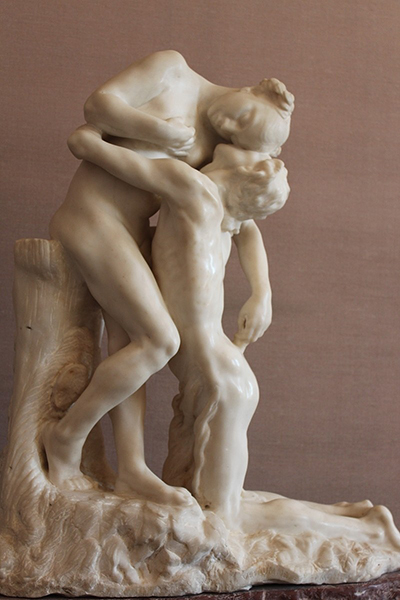 Buy Art Prints Now
Buy Art Prints Nowfrom Amazon
* As an Amazon Associate, and partner with Google Adsense and Ezoic, I earn from qualifying purchases.
Camille Claudel was among the most brilliant students of master Auguste Rodin who collaborated on major Rodin's commissions. After working with her master, she continued her own artwork with the support from her former master.
Sakuntala is a sculpture whose idea was borrowed from a legendary Indian story Shakuntala by the famous poet Kalidasa. Sakuntala, also known as Vertumnus et Pomona, is one of Camille Claudel's creative piece of art that earned her recognition in the entire art industry. Being among her early pieces as a lone artist, she used history to showcase her artistic brilliance.
Sakuntala was first crafted in a plaster circa by Camille Claudel in the year 1886. Following the repeated calls for a state commission, the artwork was then curved in marble in the year 1905 by order of Comtesse de Maigret from which it was entitled Vertumnus and Pomona. The plaster version measured approximately 190 × 110 × 60 cm from which it was transformed to a white marble on a red marble base with a measurement of H. 91 cm; W. 80.6 cm; D. 41.8 cm S.1293. This figure was signed on the back of the red marble base by Camille Claudel.
From the statue, the sculptor clearly shows the celebration of the triumph of love as per the Indian tale. The two enormous figures conform to the story of the reunion between a wife and her husband after a long separation. The figure also portrays Auguste Rodin's influence on the artist together with her creative and autonomous style.
This artwork was exhibited in the year 1888 in the Salon des Artistes Francais from which many versions of the sculpture in bronze followed. Eugene Bolt came up with his bronze cast of the statue giving it the title Abandon which then shifted the subject to Greek mythology from the original Hindu. The variation in the titles, medium and storyline for the sculpture is in line with the investigations and interests of Claudel. It is these different interpretations and alterations from Hindu to Greek then finally to modern psychology which formed part of research questions in the University in France.



